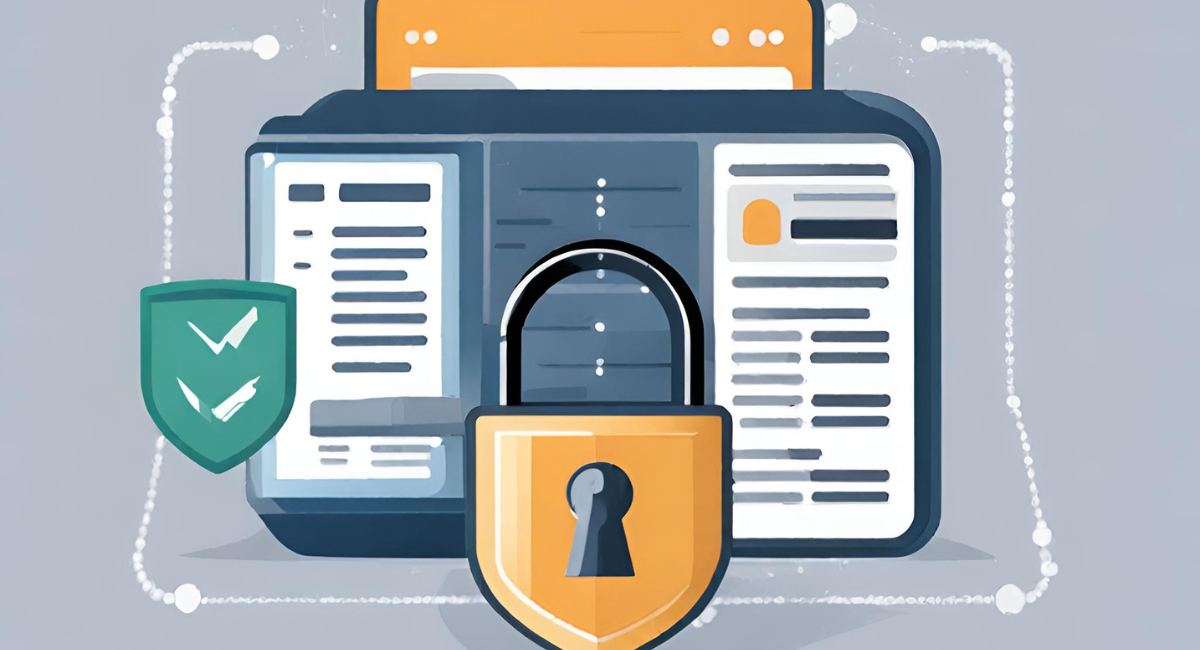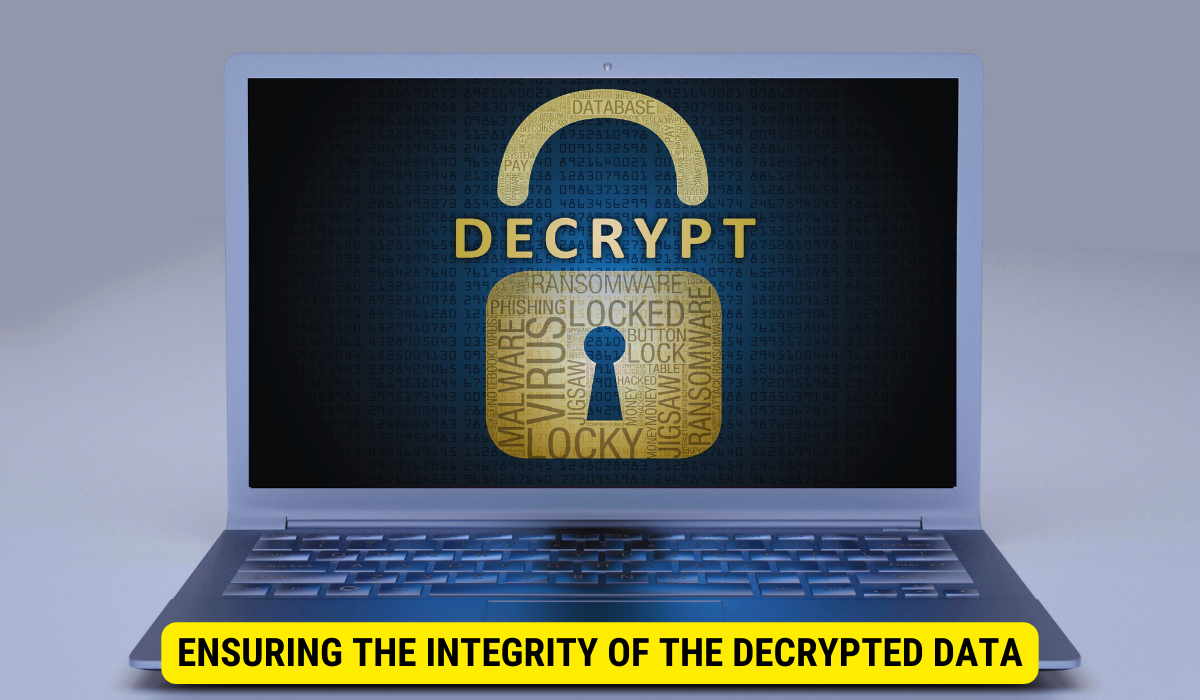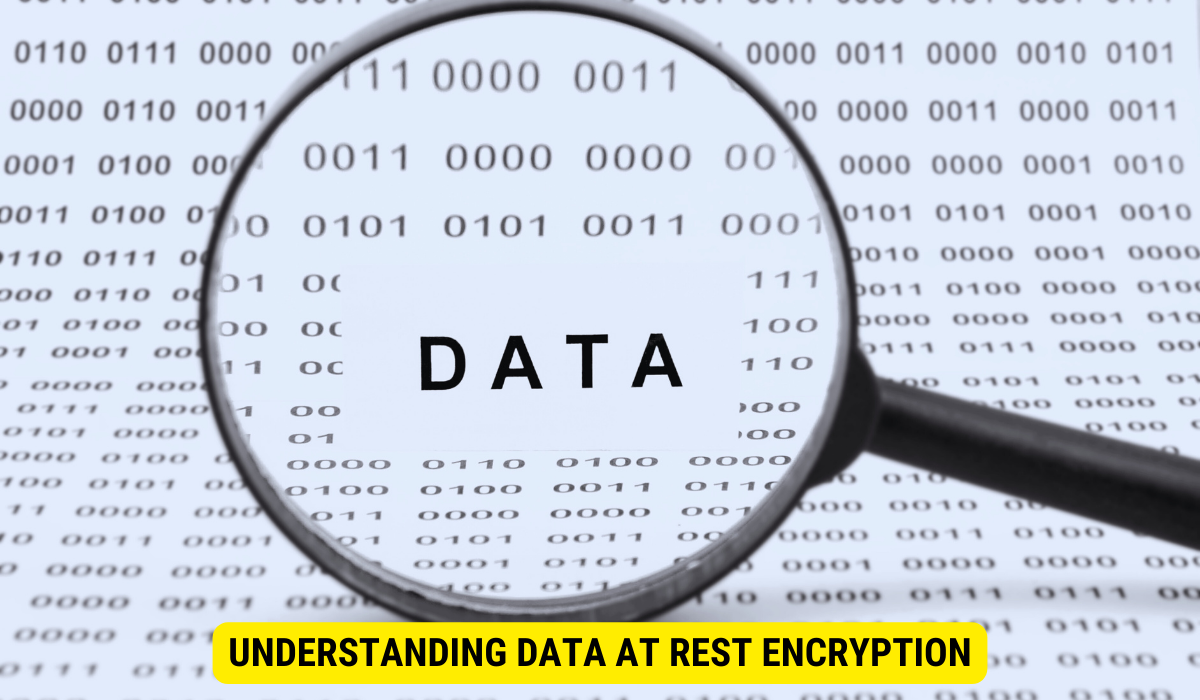Breaking data at rest encryption is a process where encrypted data stored on devices is decrypted without using the original decryption key. This is achieved through various methods such as brute-force attacks, dictionary attacks, and exploiting vulnerabilities in the encryption algorithm or key management system. Proper preparation, including gathering the right tools, understanding ethical considerations, and being aware of legal implications, is critical before starting this process.
Data at rest encryption is an essential security measure that protects sensitive information stored on various devices and media. However, there may be scenarios where breaking or cracking this encryption becomes necessary. In this step-by-step guide, we will explore the process of breaking data at rest encryption, discussing the reasons, tools, and challenges involved.
Understanding Data at Rest Encryption
Data at rest encryption is the security method to protect data stored on physical devices, such as hard drives, solid-state drives, or cloud storage. It ensures that any unauthorized access to the data will be unable to decipher or use it.
Data at rest encryption is crucial in safeguarding sensitive information from potential threats. In today’s digital age, where data breaches and cyberattacks are on the rise, organizations must prioritize the implementation of robust encryption techniques to protect their valuable data.
The Importance of Data at Rest Encryption

Data at rest encryption is essential for several reasons. Firstly, it provides an additional layer of protection for data stored on physical devices. Even if unauthorized individuals gain access to the storage medium, they cannot read or understand the encrypted data without the appropriate decryption keys.
Secondly, data-at-rest encryption helps organizations comply with various data protection regulations and industry standards. Many regulatory frameworks, such as the General Data Protection Regulation (GDPR) and the Health Insurance Portability and Accountability Act (HIPAA), require organizations to implement adequate security measures, including encryption, to protect sensitive data.
Furthermore, data-at-rest encryption helps mitigate the risks associated with data breaches. In the event of a security breach, encrypted data remains unreadable to unauthorized individuals, minimizing the potential damage and reducing the likelihood of identity theft or financial loss.
Basic Concepts of Data at Rest Encryption
Data at rest encryption involves transforming data into an unreadable format using cryptographic algorithms. This process ensures the data remains secure and confidential, even when stored on vulnerable devices.
One of the fundamental concepts in data-at-rest encryption is using encryption keys. Encryption keys are unique codes that are used to encrypt and decrypt data. The encryption key used to encrypt the data must be kept secure and separate from the encrypted data to maintain the encryption process’s integrity.
Another important concept is the choice of encryption algorithms. Different encryption algorithms offer varying levels of security and performance. Commonly used algorithms include Advanced Encryption Standard (AES), Triple Data Encryption Standard (3DES), and RSA.
Organizations must also consider key management practices when implementing data-at-rest encryption. Effective key management involves securely storing and distributing encryption keys and regularly rotating and updating them to prevent unauthorized access.
In conclusion, data at-rest encryption is critical to data security. By implementing robust encryption techniques, organizations can protect their sensitive information from unauthorized access, comply with data protection rules, and mitigate the risks associated with data breaches. Understanding the importance and basic concepts of data at rest encryption is essential for organizations seeking to enhance their data security posture.
Preparing for the Encryption-Breaking Process
Before embarking on the process of breaking data at rest encryption, it is crucial to prepare adequately. This involves gathering the necessary tools and software and understanding the ethical considerations and legal implications associated with the process.
Encryption, having the right tools and software, is essential when breaking data at rest. These tools and software are designed to help decrypt encrypted data and gain access to the information stored within. Some necessary tools include encryption cracking software, password recovery tools, and forensic analysis software.
Encryption cracking software is designed to break encryption algorithms and decrypt protected data. These programs use various techniques, such as brute force, dictionary, and rainbow table attacks, to crack the encryption and reveal the original information.
On the other hand, password recovery tools focus on recovering passwords used to encrypt the data. These tools use advanced algorithms and methods to analyze encrypted passwords and attempt to recover the original password that was used to encrypt the data. This can be chiefly useful when dealing with encrypted files or systems that require a password for access.
Forensic analysis software also plays a crucial role in the encryption-breaking process. This software is designed to analyze and examine digital evidence, including encrypted data, forensically soundly. It helps investigators identify and extract relevant information from encrypted files or systems, aiding decryption.
While gathering the necessary tools and software is important, it is equally crucial to consider the ethical and legal implications of breaking data-at-rest encryption. Ethical considerations involve understanding the potential consequences and impact of decrypting encrypted data. It is important to ensure that the decryption process is conducted within the boundaries of the law and with proper authorization.
Legal implications can vary depending on the jurisdiction and the specific circumstances surrounding the encryption-breaking process. In some cases, breaking encryption without proper authorization or legal grounds can be considered a criminal offense. Therefore, it is essential to consult legal experts and ensure compliance with relevant laws and regulations.
Additionally, it is important to consider the potential impact on privacy and data protection. Decrypting encrypted data may involve accessing sensitive information that should be handled with utmost care and confidentiality. Appropriate security actions should be in place to protect the decrypted data and prevent any unauthorized access or misuse.
In conclusion, preparing for the encryption-breaking process involves gathering the necessary tools and software, understanding the ethical considerations, and being aware of the legal implications. By ensuring proper preparation, individuals can approach the encryption-breaking process with the necessary knowledge and resources to conduct it responsibly and within the boundaries of the law.
Detailed Steps to Break Data at Rest Encryption
Breaking data at rest encryption requires careful analysis, planning, and execution. In this section, we will outline the step-by-step process involved in decrypting encrypted data.
Initial Analysis and Planning
Before commencing the decryption process, conducting a comprehensive assessment of the encrypted data is imperative. This evaluation aims to pinpoint any potential vulnerabilities or weaknesses that may be leveraged to decrypt the data. It encompasses meticulously examining the encryption algorithm, key length, and established vulnerabilities.
Furthermore, this analysis may extend to scrutinizing the data storage framework, which includes aspects such as the file system or database, to gain a thorough understanding of how the encrypted data is stored and accessed. This in-depth understanding can offer valuable insights into potential avenues of attack.
Once the analysis is complete, the next step is planning. Planning involves creating a roadmap or strategy for breaking the encryption effectively. This includes determining the resources required, such as computational power, time, and expertise, and considering any legal and ethical implications.
Executing the Encryption-Breaking Process
Once the analysis and planning are completed, it is time to execute the encryption-breaking process. This typically involves using specialized software or algorithms to crack the encryption.
There are various techniques that can be employed during the execution phase. One common approach is brute-forcing, where all possible encryption keys are systematically tried until the correct one is found. This method can be time-consuming and resource-intensive, especially for strong encryption algorithms with long key lengths.
Another approach is known as a dictionary attack, where a pre-compiled list of commonly used passwords or phrases is used to attempt to decrypt the data. This method is more efficient than brute-forcing, focusing on likely passwords rather than trying every possible combination.
In some cases, attackers may exploit vulnerabilities in implementing the encryption algorithm or weaknesses in the key management system. These vulnerabilities can allow for shortcuts or backdoors to be discovered, bypassing the need for a full decryption process.
The execution phase may require significant computational power and time, depending on the strength of the encryption. It is important to note that breaking data at rest encryption without proper authorization is illegal and unethical. This information is provided for educational purposes only.
Common Challenges and How to Overcome Them
Breaking data at rest encryption can be challenging due to various factors, such as advanced encryption algorithms and hardware or software limitations. However, these challenges can be overcome with the right approach and tools.
Dealing with Advanced Encryption Algorithms
Advanced encryption algorithms, such as AES (Advanced Encryption Standard), pose a significant challenge for breaking data at rest encryption. To overcome this challenge, employing sophisticated techniques or exploring vulnerabilities in implementing the encryption algorithm may be necessary.
Overcoming Hardware and Software Limitations
Hardware or software limitations can also hinder the encryption-breaking process. In such cases, it may be necessary to upgrade the hardware or find alternative software solutions that can handle the computational requirements of the decryption process.
Ensuring the Integrity of the Decrypted Data

After successfully decrypting the data at rest, it is important to ensure its integrity. This involves verifying the accuracy of the decrypted information and implementing measures to safeguard the data from unauthorized access.
Verifying the Accuracy of Decrypted Data
Verifying the accuracy of the decrypted data is crucial to ensure that it is usable and free from corruption. This can be done by cross-referencing the decrypted data with known values or performing validation checks to ensure that the data has not been altered during the encryption-breaking process.
Safeguarding the Decrypted Data
Once the accuracy of the decrypted data is verified, it is essential to implement measures to safeguard it from unauthorized access. This may involve re-encrypting the data using a different encryption method or securely transferring it to a secure storage environment.
Key Takeaways
- Data at Rest Encryption Protection: Data at rest encryption is a pivotal security measure that safeguards sensitive data on storage mediums. Unauthorized access to this data will prevent the perpetrator from deciphering its content without the decryption key.
- Importance of Preparation: Before attempting to break encryption, it’s essential to have the appropriate tools and be aware of both the ethical considerations and legal implications.
- Methods to Break Encryption: Tools like encryption cracking software can use brute-force attacks, dictionary attacks, and rainbow table attacks to decrypt data. Exploiting vulnerabilities in encryption algorithms or key management systems can also aid decryption.
- Challenges Faced: Advanced encryption algorithms like AES present significant challenges. Hardware and software limitations can also be hurdles in the decryption process. After decryption, verifying the integrity and accuracy of the data is crucial.
- Legal and Ethical Implications: Breaking encryption without the necessary permissions can lead to legal repercussions. Ethical considerations are also paramount, ensuring that decryption is conducted responsibly.
FAQs
What is data at rest encryption?
Data at rest encryption is a security method that protects data stored on physical devices such as hard drives, SSDs, and in cloud storage, ensuring unauthorized access cannot decipher the data.
Why is data-at-rest encryption important?
It offers an extra level of safeguarding, assists organizations in adhering to data protection laws such as GDPR and HIPAA, and diminishes the potential harm from data breaches.
What are some tools used to break data at rest encryption?
Tools include encryption cracking software, password recovery tools, and forensic analysis software.
What are the challenges in breaking data at rest encryption?
Challenges include dealing with advanced encryption algorithms, overcoming hardware and software limitations, ensuring the integrity of decrypted data, and verifying its accuracy.
Is breaking data at rest encryption legal?
Breaking encryption without proper authorization or legal grounds can be a criminal offense. It’s essential to consult legal experts and ensure compliance.
Conclusion
In conclusion, breaking data at rest encryption is a complex process that requires careful planning, analysis, and execution. It is important to approach this task ethically and consider the legal implications of the encryption-breaking process. By following the step-by-step guide outlined in this article and utilizing the appropriate tools and techniques, breaking data at rest encryption is possible when necessary.

